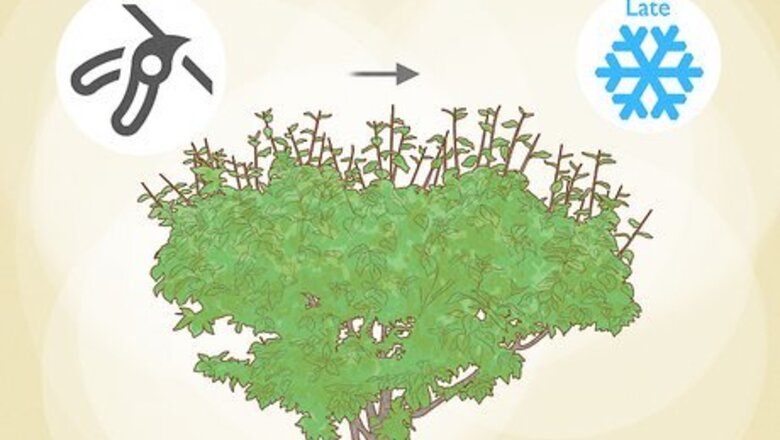
views
Pruning Young Plum Trees
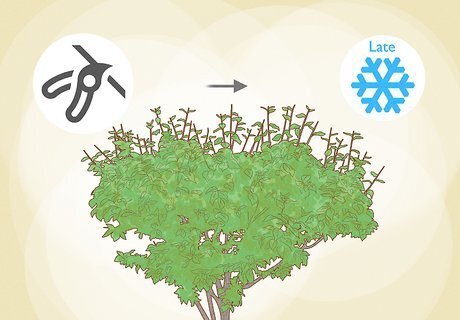
Prune at the right time. You can prune the tree while it is dormant in winter or in summer. Dormant pruning is pruning the tree during the late winter, when no new growth is happening and the tree doesn't have any leaves. Pruning while the tree is dormant encourages vibrant growth come spring, and it's less likely to cause damage to the tree than summer pruning. Summer pruning can be used to slow the growth of a tree that is getting too big and to thin new growth that is overcrowding. Prune as late in the winter as possible before new growth occurs, since heavy freezes after pruning could damage the tree. Save some pruning for the summer. Pruning too much in late winter can lead to vegetative overgrowth and reduced fruit production.
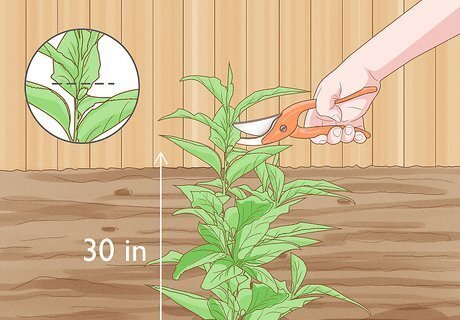
Cut the tree to size after planting. It's important to prune a young tree during its first dormant season to encourage good growth and a suitable shape. As soon as possible after planting, cut it down so that it's only about 30 inches (76.2 cm) high. Make the cut just above a bud. New growth will occur where you make each cut. Use loppers to make clean, sharp cuts. Gouges and jagged edges leave the tree vulnerable to pests and disease. After this first pruning, you might wish to paint the tree with white latex paint to keep it from getting sunburned and protect it from pests.
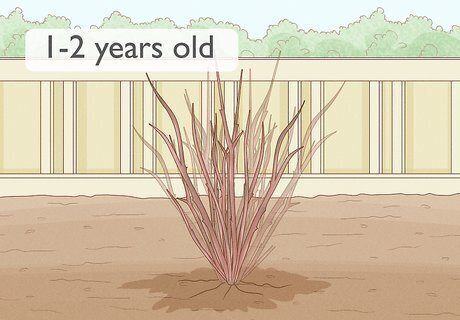
Create a scaffold whorl. Choose four branches evenly spaced around the tree to serve as the tree's "scaffold whorl." These branches provide structure and keep the tree's shape balanced. Cut each of the four branches back so that each one has just 1 or 2 buds. Make the cuts just above the buds. Cut the remaining side shoots and branches flush against the trunk. For the first two years of the tree's life, prune only during the dormant season and keep the scaffold whorl cut back to 10 inches (25.4 cm).
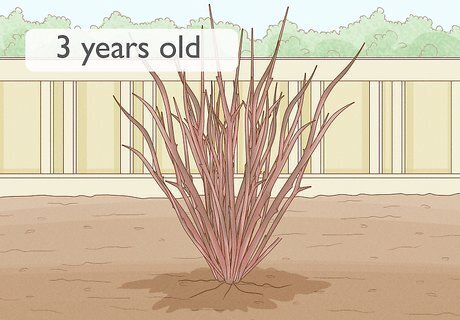
Create more scaffold whorls in the third year. By year 3, the tree will have produced another set of strong lateral shoots. Create more sets of scaffold whorls that are evenly spaced around the tree. Cut the whorls closer to the top of the tree back to 1 bud, and leave the whorls closer to the bottom 2 buds. The plum tree should take on a vase or Christmas-tree shape, which allows sunlight to filter through and encourage healthy growth.

Keep pruning the trunk. Cut back the trunk by a foot or two each year to control the height of the tree and encourage bushy growth toward the bottom. Prune it so that a bud is left at the tip.

Continue with this pattern until the tree has reached your desired height. For the first 3-5 years of the tree's life, continue creating new scaffold whorls and cutting back the trunk during the tree's dormant period. When you're happy with the tree's height, move on to pruning techniques suitable for older trees.
Maintaining Older Plum Trees
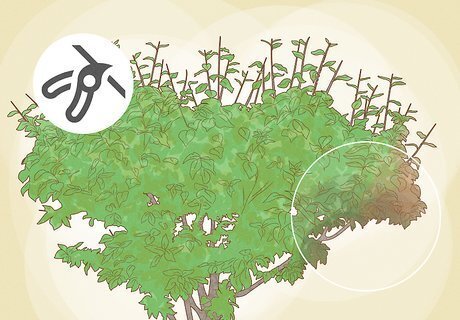
Prune dead and diseased branches. Branches that are dead or diseased should be cut away each year so that the tree can stop wasting energy on them. Use a tree saw or loppers to cut the branches flush with the tree trunk. Be sure to make clean cuts so that the tree isn't vulnerable to further disease. If larger branches have developed a collar, cut just outside the collar, a few inches from the trunk. Dead and diseased branches can be removed any time of year, since taking them off won't affect the growth of the tree.
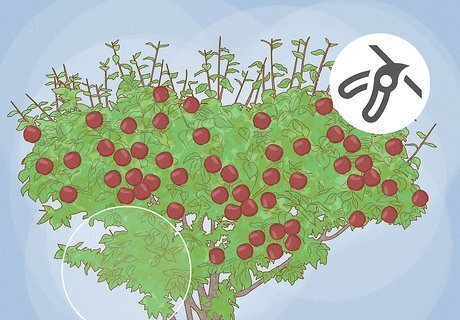
Prune branches that don't bear fruit. If you notice a branch or two that don't seem to be producing fruit, you may want to remove them. Make your cut flush with the tree's trunk, rather than just cutting back to a bud, since new growth on the same branch isn't likely to produce different results.
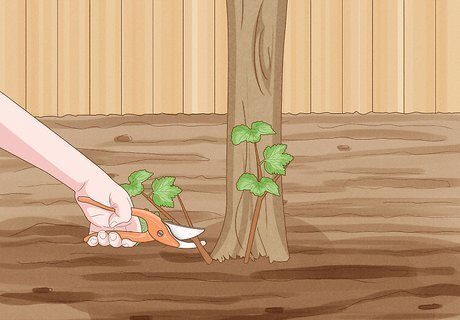
Cut back the suckers. Suckers are new shoots that come up from the root system around the base of the tree. Cut them away so that the tree's energy is directed into the main tree trunk and won't get sapped by the suckers. Cut the suckers all the way to the ground using loppers.
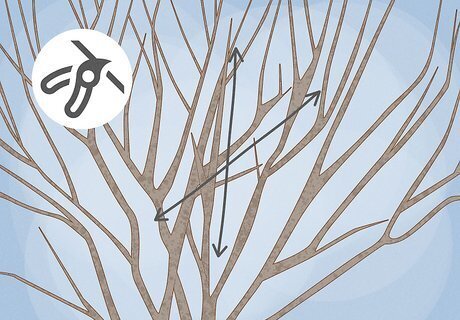
Cut branches that cross over other branches. Each season, the tree is likely to produce new branches that cross over existing branches. It's important to prune the tree carefully so that no crossover branches remain. Crossover branches crowd the tree and prevent sunlight from filtering through the branches. They also inhibit air flow and can leave the tree vulnerable to disease and pests.

Prune in the summer to discourage growth. If your plum tree is getting too big for your yard, you can prune in the summer to slow down its growth. Whereas dormant pruning encourages vibrant spring growth, summer pruning cuts away the tree's energy and limits growth for the season. If you prune in the summer, be careful not to cut away too much of the tree. Pruning too late in the summer can make the tree vulnerable to cold winter temperatures. In the US, don't prune after July to reduce the risk of frost damage to new growth. Beware that summer pruning can cause the tree to put its energy into leaf growth rather than fruit production.

















Comments
0 comment